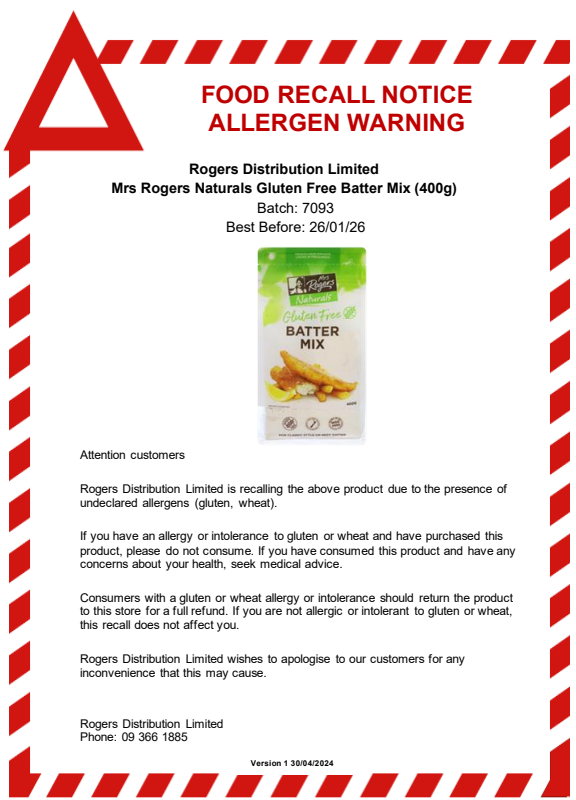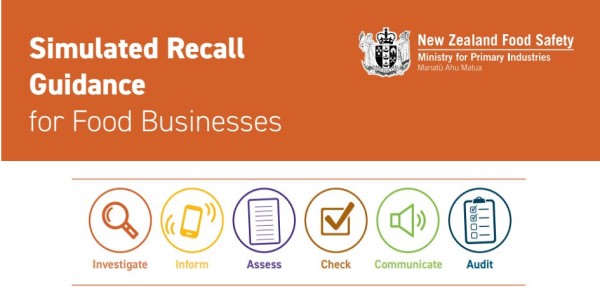Since 1 July 2023 it has been a requirement for every business to do an annual mock recall. So some of you will have until 30 June 2024 to get one done. This will help ensure you are ready for a real recall if it occurs.
If you are signed up to the MPI recall emails like me, you’ll be surprised at the amount of products and ingredients that get recalled every week. (See link at bottom of article). I often wonder what exactly went wrong to cause the recall, which range from pieces of metal and plastic, to allergens that shouldn’t be there, and bacterial contamination. They might even give you some ideas for your own mock recall scenario!
What is a mock recall
A mock recall also known as a simulated recall is a practice of a recall situation. It involves coming up with a scenario that might happen, and going through the steps you would take to deal with it.
Some example mock recall scenarios
An easy one to start with is to imagine that an ingredient you use gets recalled because it is contaminated with something like an allergen or a chemical. For example the flour is contaminated with milk powder, or the chocolate with nuts, or the sugar with lead. Look at an open packet of the ingredient you have and write down its batch code or best before date as the contaminated batch.
Another approach to a scenario is to imagine a customer complaint being received, eg about a foreign object in the food, like a piece of broken glass or plastic. You could rotate the scenarios so that one year you do a supplier issue and the next year a customer complaint issue.
How do I do a mock recall?
Once you have a scenario you now go through the 6 steps in the process of recalls:
- Investigate and identify affected products
- Inform – draft the email you would send to inform your verifier
- Assess the risk and decide the type of recall required
- Draft the email you would send to inform MPI of your recall
- Communicate – draft your recall notices to consumers or business customers from the templates
- Audit – review how it went and what you’ve learnt
There is an MPI Guide to Simulated (Mock) Recalls you can download at the bottom of this article which explains the 6 steps and has links to the forms and records you need to fill in to show your verifier. As it is a mock you don’t need to actually send the emails or forms to MPI or your verifier or customers like you would in a real instance, you would just save the drafts and show them to your verifier.
What will I learn from a mock recall?
Practice scenarios are great for learning how to do things in a situation that is less stressful than real life. You don’t want the first time you do this to be a real issue where people’s health and your business reputation is on the line. So learning it in advance helps you be more confident in dealing with it if it does happen for real in the future.
You might also find out things you can improve. For example if you decant your ingredients into tubs and don’t keep the batch information you wouldn’t know if its the particular batch involved in the recall and would have to dispose of it all. So you might decide that going forwards you’ll keep the date codes with the ingredients.
Or you might find when you come to do a mock recall notice that you don’t have any good photos of your products, which prompts you to take a photo of all of them ready for future use. Or that you didn’t have an up to date list of your business customer emails so you need to go through and update the information. These learning points can be noted in your audit at the end so you can improve for next time.

Summary
You never know when a recall might happen to you, so its good to be prepared. Its like first aid, you hope you wont need it, but its good to stay up to date and practiced just in case you do! So take the opportunity to learn the process and be more confident in your actions next time.
Links
MPI webpages on how to do Mock Simulated recalls here
MPI web page of all recalled products here

